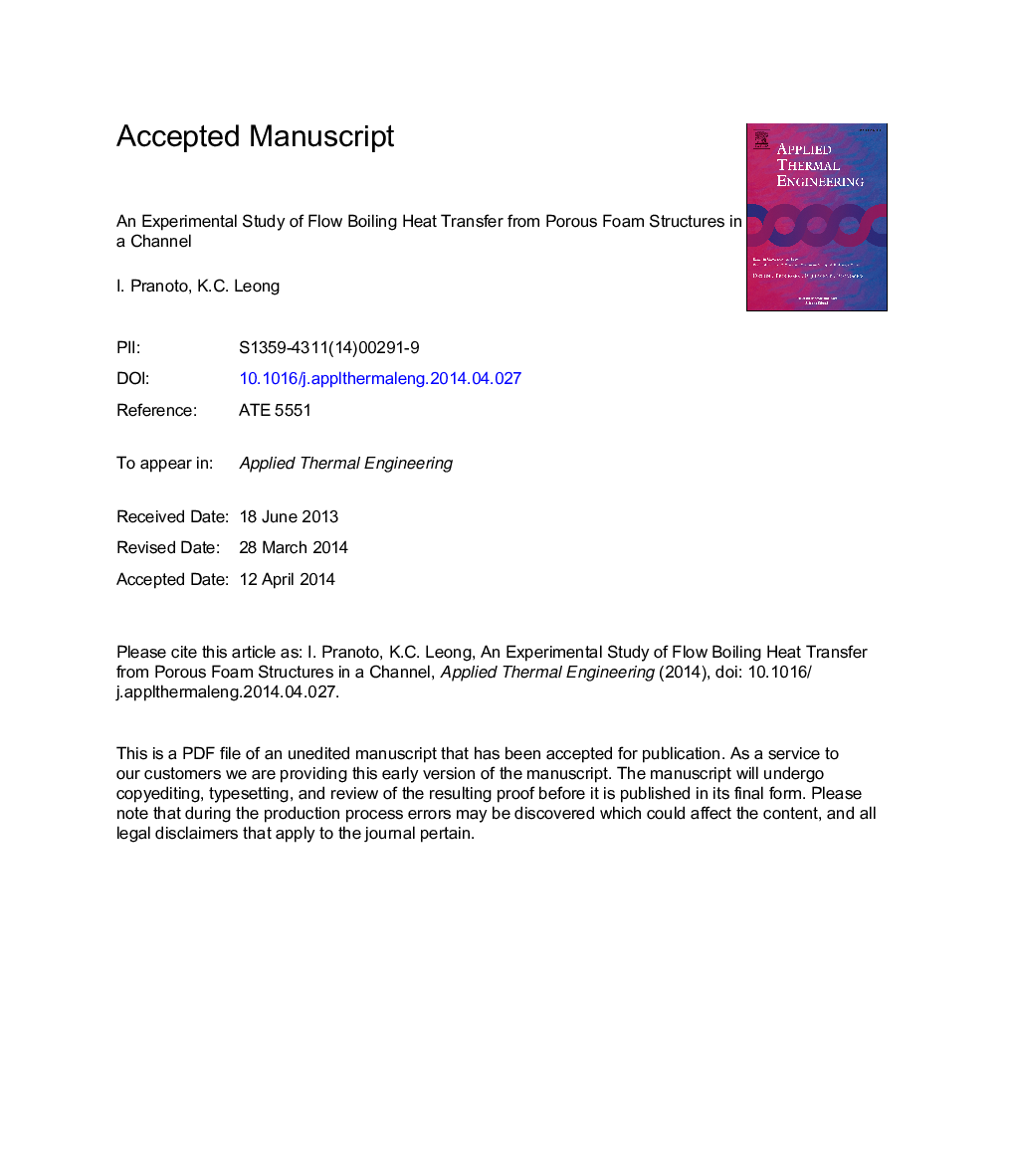| Article ID | Journal | Published Year | Pages | File Type |
|---|---|---|---|---|
| 646253 | Applied Thermal Engineering | 2014 | 37 Pages |
Abstract
This paper presents a study of the flow boiling heat transfer and bubble characteristics from porous graphite foam structures in a channel. The flow boiling performance and phenomena for different coolant mass fluxes, evaporator gaps, and foam properties were investigated with a two-phase cooling experimental facility. Two types of graphite foams with different thermophysical properties viz. “Pocofoam” of 61% porosity and “Kfoam” of 72% porosity were used as the enhanced evaporator structure and tested with the dielectric liquid FC-72. Evaporator gaps of 6, 4, and 2Â mm were tested with coolant mass fluxes of 50, 100, and 150Â kg/m2Â s. The experimental results show that the evaporator gap, coolant mass flux, and foam properties have effects on the flow boiling characteristics and performance. It was found that the use of “Pocofoam” of 61% porosity and “Kfoam” of 72% porosity had enhanced the boiling heat transfer coefficients by up to 2.5 and 1.9 times, respectively as compared to those of a smooth surface. The results also show that the boiling performance increases with the increase of coolant mass flux and the evaporator gap. “Pocofoam” graphite foam of 61% porosity exhibits better boiling performance than “Kfoam” graphite foam of 72% porosity for all tested cases. From this study, a maximum local flow boiling heat transfer coefficient of 16.5Â kW/m2Â K was achieved with “Pocofoam” of 61% porosity at 6Â mm gap and the mass flux of 150Â kg/m2Â s. Flow boiling images were recorded to study the flow boiling phenomena and the bubble growth mechanism. “Laminar” and “turbulent” bubble regimes were observed from these images and larger “mushroom cloud” bubbles and a vapor film layer were identified at a heat flux of 83.3Â W/cm2.
Related Topics
Physical Sciences and Engineering
Chemical Engineering
Fluid Flow and Transfer Processes
Authors
I. Pranoto, K.C. Leong,
